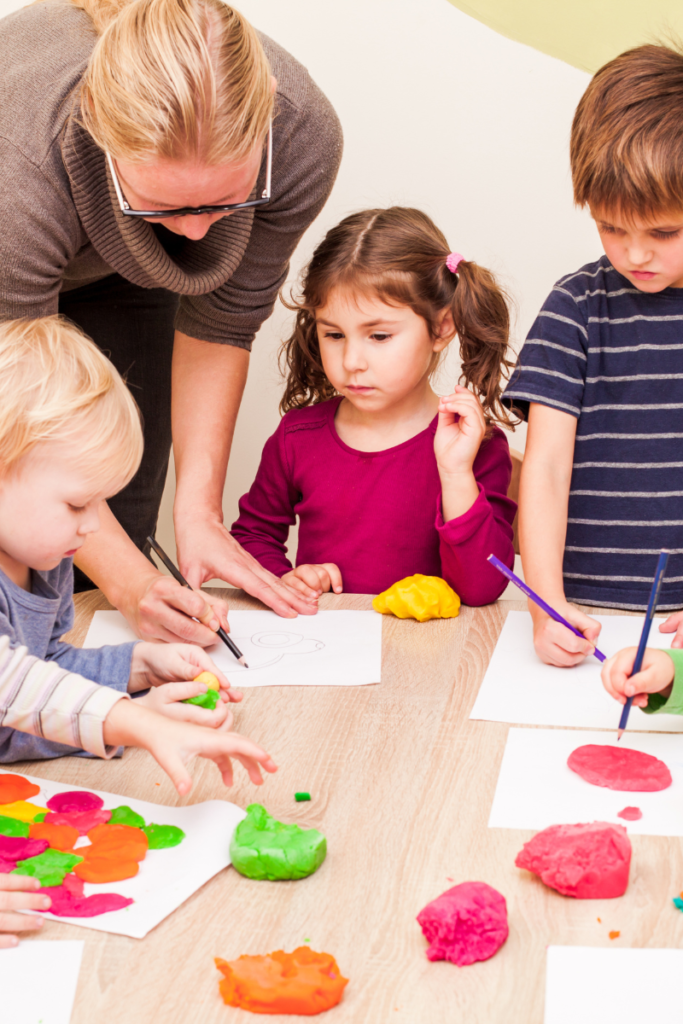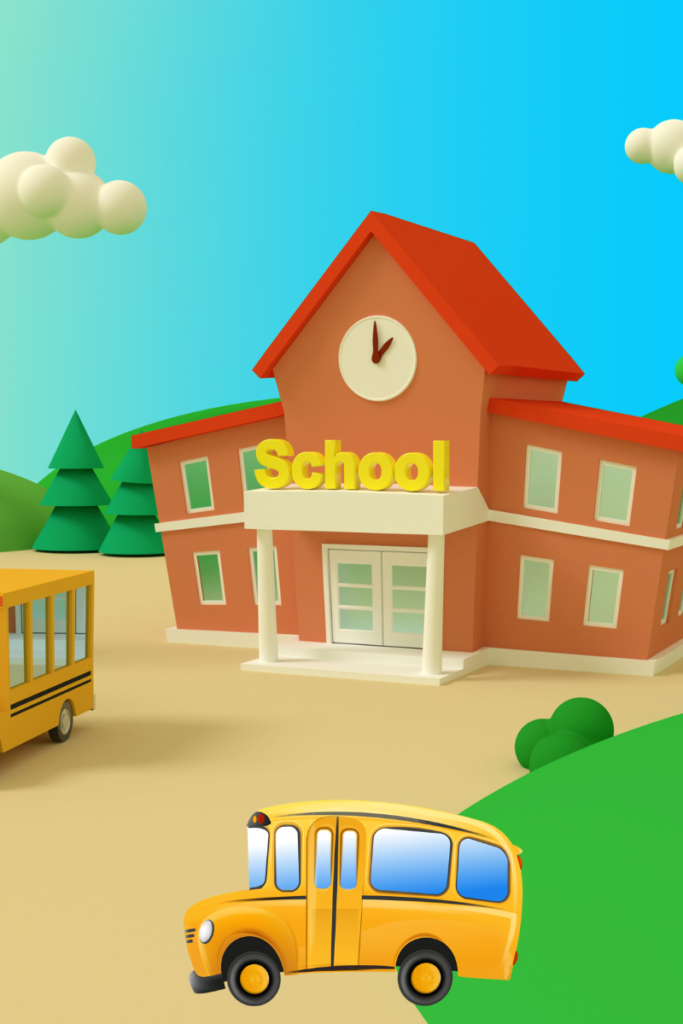Are you ready for another school year?
I am super excited for the new school year and so is my daughter.
We are going to be sticking with some of the tried and true curriculums that we have used for years. I’m going to continue with Monarch for language and Teaching Textbooks for math. I really like both of these programs.
However, we are going to adventure out this year and try Good and Beautiful and Sonlight for science and history.
We will see how that goes, but I am looking forward to trying Good and Beautiful because I can do all grades together at the same time.
I believe the children will have a great time with these programs. “Sadly”, I only have three kids left in school now, so it may be more manageable to organize programs that cater to different age groups.
In my last post, we discussed the five essential steps to a successful new year.
However, what if you are new to homeschooling altogether and just trying to figure out how to get started?
I totally understand. I have been there and done that. When my husband and I began our journey over 20 years ago with homeschooling, we had no idea where to begin.
Today, we are going to look at a step-by-step guide about how to transition your kids from traditional school to homeschooling.
If your children are already enrolled in public school, then we will take a look at what you need to do for a smooth transition.
How do I transition my child to homeschool?
What are the 5 approaches to homeschooling?
Traditional Approach:
The traditional approach to homeschooling closely mirrors the structure and methods they use in traditional schools.
Many homeschooling programs follow a structured curriculum, use textbooks, and aim to recreate the traditional classroom experience in the comfort of your own home. This method offers a familiar and organized learning experience, with a focus on key subjects like math, science, language arts, and history.
Unit Studies Approach:
Unit studies take a thematic approach to education, where different subjects are taught around a central theme or topic. For example, if the main theme is studying dinosaurs, children may explore the history of dinosaurs in science, read books about dinosaurs in language arts, and create dinosaur-related artwork in art class. Unit studies foster a holistic understanding of a subject while promoting cross-curricular connections.
Charlotte Mason Approach:
The Charlotte Mason approach is named after a 19th-century educator and stresses the importance of a gentle and living education. This method involves the use of quality literature, nature studies, and hands-on experiences. The curriculum is comprehensive, encompassing literature, nature observation, fine arts, and habit formation, with a focus on nurturing the child as a whole person.
Unschooling Approach:
Unschooling takes a child-led learning approach where the child’s interests and passions determine the direction of their education. Instead of following a predetermined curriculum, unschoolers learn through real-life experiences, self-directed exploration, and individual pursuits of interest. The emphasis is on fostering a love for learning and allowing the child’s curiosity to drive their educational journey. After all, we want our children to enjoy learning.
Montessori Approach:
The Montessori approach is based on the principles developed by Maria Montessori, which focus on child-centered and hands-on learning.
The Montessori homeschooling approach offers a prepared environment with specially designed materials that encourage independent exploration and self-paced learning. Its focus is on developing practical life skills, sensory abilities, and providing individualized instruction.
It’s important to note that these styles of homeschooling are not mutually exclusive. Many families incorporate different elements of each style of homeschooling to fit their child’s unique needs.
The beauty of homeschooling lies in the flexibility to choose an approach or combine methods that align with your family’s values and educational goals. So, explore, experiment, and find the approach that resonates with you and your child as you embark on this exciting homeschooling journey!
Additionally, it’s worth mentioning that each of these approaches allows for flexibility and adaptation to suit the individual needs of the child.
Homeschooling offers the opportunity to personalize education in a way that fosters a love for learning and caters to different learning styles. Whether your child thrives in a structured environment or prefers a more self-directed approach, you have the freedom to tailor their education accordingly.
Moreover, many homeschooling families often find themselves blending different approaches or creating their own unique hybrid approach. They may incorporate elements of the traditional curriculum while incorporating hands-on activities, nature exploration, or project-based learning. The beauty of homeschooling is that you can mix and match, creating a customized educational experience that suits your child’s strengths, interests, and goals.

What is the best way to teach my child?
Homeschooling allows you the freedom to tailor your child’s education to what they need and what interests they have.
My 10-year-old just loves working in his garden. He loves worms, working with his dad to make homemade compost, and enjoyed the ant farm he received last month for his birthday.
So this year we are going to study the ecosystem. I know he is going to have a blast and learn a lot.
The first step is to create a warm and supportive environment. Make learning a comfortable and enjoyable experience for your child. Set up a cozy learning space where they can feel relaxed and engaged.
That can be anywhere. You can create that space at the kitchen table, bedroom, homeschool room, or outside on the patio table. Get creative and let learning take place.
Just remember moms, it has taken me many years to realize it doesn’t always have to be sitting at a little school desk like regular school.
Make it fun for you and your child. Let them have a part in deciding where that will be. You might be surprised at their creativity.
Surround them with materials, books, and resources that spark their curiosity and ignite their love for learning.
Flexibility is key. Unlike traditional classrooms, you have the freedom to adjust your schedule and teaching methods according to your child’s natural rhythm. If your child is a morning person, take advantage of their energy and tackle challenging subjects early on.
If they thrive in the afternoon or evening, adapt your schedule accordingly. Remember, there’s no rush or pressure to follow a strict timetable. Embrace the flexibility you have in teaching your kids at home.
Think outside the box when it comes to curriculum. While textbooks can provide structure and guidance, don’t be afraid to explore alternative resources and methods.
There again, this took me a long time to kind of break away from the workbook mentality. Don’t get me wrong, having some structure can be good. Just don’t let that be your only way of teaching.
Incorporate games, educational apps, online videos, and interactive activities that align with your child’s interests. The world is your classroom, so take advantage of it. Visit museums, parks, and historical sites to provide hands-on learning experiences that bring lessons to life.
Field trips can make the best teachable moments and you can make some memories along the way.
Regularly check in with your child and create an open dialogue where they feel comfortable sharing their thoughts, questions, and concerns. Listen attentively to their ideas and give them space to express their creativity.
Encourage them to take ownership of their education by involving them in the decision-making process. Let them have a say in choosing topics, projects, and assignments. This empowers them to take responsibility for their own learning journey.
Enjoy the freedom to teach in a way that suits your child’s unique style and encourages their natural curiosity.
So, take a deep breath, and trust in your abilities as a caring and supportive educator. As well as, a loving parent that knows their child best, and enjoys the journey of homeschooling with a relaxed and open mindset.
How to switch from traditional school to homeschooling in the middle of the year?
So, you’re considering making the switch from traditional school to homeschooling in the middle of the year? Rest assured, it’s absolutely doable to change mid-way into the year. While it may seem like a significant change, with a little planning and flexibility, you can smoothly transition to homeschooling mid-year.
First, familiarize yourself with your state’s homeschooling laws and requirements. Understanding the legal obligations will ensure that you comply with any necessary regulations.
Before beginning homeschooling, it’s important to understand the documentation and notifications that may be necessary. Guidelines can vary by state, so it’s crucial to research and adhere to the specific requirements.
To ensure your child’s academic success, it’s important to evaluate their standing in each subject and pinpoint any areas that require extra attention or review. This will assist you in transitioning their learning smoothly. One effective method is using diagnostic tests or assessments to measure their understanding and locate any knowledge gaps. You can easily find diagnostic tests online.
Create a flexible curriculum plan that aligns with your child’s needs and educational goals. Take into account their strengths, weaknesses, and learning style. Choose appropriate resources, such as textbooks, online courses, or educational materials that cater to their individual needs. Keep in mind that flexibility is key, especially during the mid-year transition, as you may need to adjust the pace or content to ensure a smooth transition. You may need to find out where your child is academically. There are curriculums that offer placement tests for a starting point in your child’s learning.
However, you can just go with the grade that your child is at and work with them at that level. After all, you will be able to fill in the gaps if necessary if your child should need it.
Communicate with your child’s previous school. Notify them of your decision to homeschool and inquire about any records or documents you may need, such as transcripts or progress reports. This will ensure a smooth transfer of academic information and help you track credits if necessary.
Depending on your state’s laws you may need to be enrolled in your local county or an umbrella school for your homeschool cover and protection.
Finally, be patient and allow time for adjustment. Switching from traditional school to homeschooling mid-year may require a period of adaptation for both you and your child.
Making the transition from traditional school to homeschooling in the middle of the year may seem like a challenge and maybe a little scary to make that first step. However, you can create a successful and rewarding homeschooling experience for your child with a little time and practice.

How to transition from high school to homeschooling?
Considering switching your kids from traditional school to homeschooling, you may be wondering about the most effective way to do so.
If you are a beginner in homeschooling, please refer to my previous post on “5 Essential Steps to get you started” above. This guide will assist you in understanding the fundamentals of starting your homeschooling journey.
However, you may be wondering how changing this late in the game may affect your child with graduation and college.
First of all, it’s important to know what high school credits are required in your state. Whatever credits you needed for high school will be the same when homeschooling. That is if that is the approach you choose to take. More about that later!
If your child has already attended some high school, then you would just build off those credits. There are different ways of tracking your homeschool credits.
You can create transcripts that document the courses your kids complete, the grades they received, and any extracurricular activities or accomplishments that they did.
Keeping good records is important at the stage of the game if your child decides to go to college or a technical school.
While tracking grades in lower grades may not be a must depending on where you homeschool, if college is the plan, then tracking grades is important in high school.
Keep a log of grades and attendance. You may or may not have this as a requirement for local laws where you live. Yet, having good records can help you and your child when they are ready for college or the workforce.
https://www.reallifeathome.com/how-to-transition-from-public-school-to-homeschool/
Now earlier I said if this is the route you choose to go, then these steps will help get you there. However, that being said, I have chosen to school our children until they are of age to take their GED.
If you are not familiar with the GED- it stands for General Educational Diploma. When you are ready you can sign up for your child to take the test for their GED.
After successfully completing the exam, your child will receive their diploma.
You may be wondering if colleges accept them. They will, I have sent two kids to college with their GED.
Therefore, if you choose to homeschool midway, you can still have a successful and productive homeschool year.

How to make homeschooling not feel like traditional school
Ah, the struggle of trying to break free from the traditional school mindset in homeschooling. Trust me, as a homeschooling mom, I totally get it! We often fall into the trap of thinking that homeschooling has to replicate the structure, routines, and methods of traditional schools. But let me tell you a little secret: it doesn’t have to be that way! Homeschooling is a beautiful opportunity to create a learning environment that works best for your family. So, let’s ditch the robotic approach and embrace the freedom to make homeschooling a unique and personalized experience.
To start, it’s important to release the idea that you must recreate a typical classroom environment in your home. Avoid strict schedules and welcome flexibility. Homeschooling provides the opportunity to adjust your day to suit your family’s unique rhythm and requirements. Enjoy the liberty to learn at your own rate, investigate topics that excite you, and take breaks as needed. Keep in mind that learning can occur at any moment and in any location, not just during regular school hours.
Eliminate the stress of adhering to a rigid syllabus or book. Homeschooling provides numerous opportunities for resources and teaching aids. Embrace a diverse range of resources, including online courses, educational apps, library books, and practical activities. Allow your child’s passions to direct their learning journey, and don’t hesitate to explore new and innovative approaches. You have the flexibility to incorporate real-world experiences, field trips, and guest speakers to enrich their education and make it exciting and unforgettable.
Homeschooling allows you to work with your kid’s strengths and weaknesses. You can school in a way that works for you and your family.
As a homeschooling parent, it’s important to trust your instincts and not compare your journey to others. Each family’s experience is unique and that’s perfectly fine. Don’t feel pressured to replicate someone else’s methods or compare your progress to others. Instead, embrace the freedom to make choices that align with your family’s values, goals, and dynamics. Remember, you are the expert on your child and no one knows them better than you do.
Just remember homeschooling should be on your schedule. Learning doesn’t just take place between certain hours. Homeschooling is all around you. From the time you teach your toddler to walk, to when you taught them their ABCs.
To all homeschooling moms, remember to take a deep breath and trust your instincts. Don’t feel the pressure to conform to traditional school standards. Homeschooling allows for individuality, flexibility, and a love for learning. Embrace this journey with confidence and create everlasting memories for you and your child. You’ve got this!
Here are some other posts you may enjoy!
